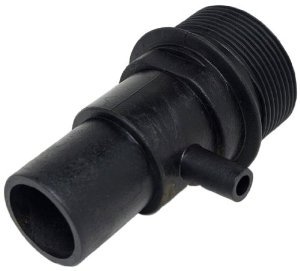सिरेमिक बॉल वाल्व
उत्पाद विवरण:
- स्ट्रक्चर
- मटेरियल
- पावर
- प्रेशर
- मीडिया
- काम करने का तापमान
- पोर्ट का आकार 1/2 inch to 6 inch
- अधिक देखने के लिए क्लिक करें
X
सिरेमिक बॉल वाल्व मूल्य और मात्रा
सिरेमिक बॉल वाल्व उत्पाद की विशेषताएं
- Round
- 1/2 inch to 6 inch
- Industrial, Chemical Processing, Pulp and Paper, Mining
उत्पाद वर्णन
Buy from us top-grade Ceramic ball valves specially designed for industrial flow systems to maintain the flow rate within the high pressure pipelines. These heavy duty plumbing fittings are available many different shapes and sizes that can be customized according to customer demands. It is provided with flanged end to make rigid connections with the help of mechanical fasteners. It can be used in corrosive as well as non-corrosive flow systems.
Engineered for Demanding Industries
Ceramic Ball Valves are specifically crafted to address the rigorous requirements of industries like mining, chemical processing, and pulp and paper. Their robust construction and high resistance to abrasion and corrosion ensure reliable sealing and extended operational lifespan, even in the harshest media, such as slurries or corrosive liquids and gases.
Superior Material Combination
The valves stainless steel body, lined with advanced ceramic, pairs with a high-purity alumina ceramic ball and ceramic/PTFE seats, elevating chemical and abrasion resistance. This material blend ensures minimal wear, bubble-tight sealing (Class VI), and excellent performance in applications where conventional valves often fail.
FAQs of Ceramic Ball Valves:
Q: How are Ceramic Ball Valves installed in industrial pipelines?
A: Ceramic Ball Valves with flanged or screwed end connections are typically installed between pipeline sections using standard industrial practices. Installation requires aligning the valve with the pipe ends, securing with compatible bolts (for flanged types), and ensuring proper sealing surfaces for reliable operation.Q: What are the main benefits of choosing ceramic-lined ball valves over traditional metal valves?
A: Ceramic-lined ball valves offer exceptional resistance to corrosion and abrasion, providing a much longer service life, particularly in harsh environments where traditional metal valves suffer rapid degradation. Additionally, their Class VI leakage rating ensures bubble-tight shutoff for demanding industrial applications.Q: Where are these valves commonly used?
A: These Ceramic Ball Valves are widely used in sectors such as chemical processing, pulp and paper industries, mining, and any environment where handling corrosive, erosive, or abrasive media is necessary. They are suitable for both liquid, gas, and slurry transfer applications.Q: When should an automated Ceramic Ball Valve be considered over manual operation?
A: Automated operation is recommended when frequent or remote valve actuation is required, or where process automation is essential for efficiency or safety. Automation-compatible options are available on request to suit these circumstances.Q: What is the process for ensuring bubble-tight sealing in these valves?
A: These valves achieve Class VI (bubble tight) leakage using precisely engineered ceramic/PTFE seats and high-purity alumina ceramic balls, which create a highly effective barrier that prevents any fluid or gas passage, even under high pressure or challenging media.Q: How do you maintain and prolong the life cycle of Ceramic Ball Valves?
A: To maximize service life, regular inspection for wear or build-up is advised, especially in highly abrasive applications. Minimal maintenance is usually required due to the valves self-cleaning, polished surfaces and superior material resistance to corrosion and abrasion.Tell us about your requirement

Price: Â
Quantity
Select Unit
- 50
- 100
- 200
- 250
- 500
- 1000+
Additional detail
मोबाइल number
Email
Industrial Valves अन्य उत्पाद
 |
AAA INDUSTRIES
सर्वाधिकार सुरक्षित.(उपयोग की शर्तें) इन्फोकॉम नेटवर्क प्राइवेट लिमिटेड . द्वारा विकसित एवं प्रबंधित |

 English
English Spanish
Spanish French
French German
German Italian
Italian Chinese (Simplified)
Chinese (Simplified) Japanese
Japanese Korean
Korean Arabic
Arabic Portuguese
Portuguese





